|
About Tibet |
|
Tibet also called Xizang is the highest
region in the world with an average elevation of 4,300 meters.
It is commonly referred to as the "Roof of the World."
Surrounded by vast mountain ranges in the north, south and the
west, it is a homeland of six million Tibetan people. Tibet
derives its name from the Sanskrit word Trivistapa which means
"heaven” and it is undoubtedly a heaven with its unparallel
scenic beauty and unmatched cultural extravagance. Tibet has
vast tourist attractions including Mt.Everest, the highest
peak in the world. It contains varied natural, cultural,
historical and religious places that offer unmatched beauty
and adventure as well. Tibet is also a pilgrimage centre for
Budhhists as it houses some of the most sacred places of the
religion. Every year large number of tourists visit Tibet for
adventurous traveling, Mt. Everest’s expedition, or the
pilgrimage. The winding Yarlang Tsangpo river, the turquoise
Yamdrok Tso Lake and other holy lakes, unique flora and fauna,
ancient ruins, majestic palaces and monasteries, folkloric
activities and religious ceremonies, Tibet is full of
adventure, gratification, natural and cultural opulence. The
popular tourist places in Tibet include Lhasa, the capital
city of Tibet, Shigatse, Gyantse, Tingri, Tsedang, Xegar,
Zangmu, etc. |
|
| |
|
Geography |
|
Tibet is
located in the Qinghai-Tibet plateau, the world's highest
region, in the area of about 2.5 million sq. km. The Tibetan
geography includes high snow peaked mountains, lakes, rivers,
tropical forests, grassland and dry arid land as well. Most of
the Himalaya mountain range, one of the youngest mountain ranges
in the world at only 4 million years old, lies within Tibet. It
comprises table-lands averaging over 4,950 metres above the sea
with peaks at 6,000 to 7,500 m, including Mount Everest, the
highest one in the world. The average altitude in Tibet is about
3,000 m in the south and 4,500 m in the north.
Tibet
shares its boundaries on the north and east by China, on the
west by the Kashmir Region of India and on the south by Nepal,
Bangladesh and Bhutan. Geographically, Tibet can be divided into
three main parts, the east, north and south. The eastern part is
forest region, the northern part is open grassland and the
southern and central part is agricultural region. Most of the
major Tibetan cities and towns like Lhasa, Shigatse, Gyantse and
Tsetang are located in the southern region. Administratively the
region is divided into one municipality and six prefectures. The
municipality is Lhasa, while the six prefectures are Shigatse,
Ngari, Lhaoka, Chamdo, Nakchu and Nyingtri(kongpo). The People's
Government of the Tibet Autonomous Region exercises the highest
administrative authority in Tibet.
|
|
| |
|
Tibet History |
|
Tibetan history can be traced back to
thousands of years. However, the written history dates back to
the seventh century from the reign of Emperor Songtsän Gampo who
combined many areas and tribes of the region and formed his
empire. He sent his minister Sambhota to India to study Sanskrit
who on his return invented the present Tibetan script based on
Sanskrit and inscribtion of history started. From the early
1600s the Dalai Lamas, known as spiritual leaders of the region
and believed to be the emanations of Avalokiteśvara, hold the
power. Between the 17th century and 1959, the Dalai Lama and his
regents were the principal political power controlling religious
and administrative authority over Tibet from the traditional
capital Lhasa, which was regarded as the most sacred city of
Tibet.
More Information on History
of Tibet |
|
|
|
|
Climate
of Tibet |
|
The climatic conditions in Tibet
greatly vary from region to region and temperature
distinctly waves within a single day. In the southeastern
region of Tibet which includes, Nyingchi, the climate is
gentle and temperate with the average temperature of eight
degrees. In western Tibet like, in Nakqu, the average
temperature is below zero degree. While in Lhasa and the
central part of Tibet, the climate is usually normal and
pleasant for traveling. It is neither ice-cold in winters
nor too hot in summer. The months from March to October
are considered best for traveling activities. In general,
Tibet is a dry land with not much rain and snow fall. An
average snowfall is only 18 inches. Most of the annual
rainfall comes in the rainy season that starts from May to
September. Usually it rains at night in Lhasa, Shigatse
and Chamdo area. The coldest months are from December to
February and are not advisable for traveling.
|
|
|
|
Places of Interest |
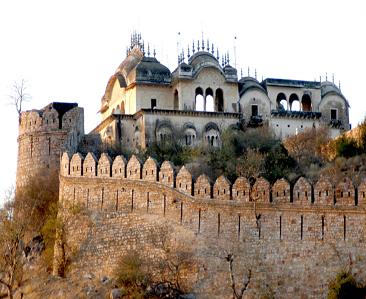 |
Tibet has
vast tourist attractions including Mt.Everest, the highest
peak in the world. It contains varied natural, cultural,
historical and religious places that offer unmatched beauty
and adventure as well. Tibet is also a pilgrimage centre for
Budhhists as it houses some of the most sacred places of the
religion. One can visit Tibet for adventurous activities, Mt.
Everest’s expedition, cultural exploration, and the pilgrimage
etc. The main places for visit include capital city
Lhasa,
Shigatse, Gyantse,
New Tingri,
Tsedang,
Xegar,
Zhangmu,
Yamdrok
Tso Lake, Nyalam
etc .
More
Information on Places in Tibet
|
|
|
|
|
Monasteries
of Tibet |
|
There were
thousands of monasteries in Tibet. Due to spread of Buddhism,
large number of monasteries were constructed and they became the
main body of Tibeten culture and architecture. Every family was
expected to send at least one boy to a monastery. Girls were
also sent to monasteries as the monastery life used to be the
only access to education and improved social status. People went
to monasteries to get educated, to merit their family and to
pursue religious fulfillment. Monasteries are still major centre
of religion, education and cultural restoration. A monastery
acts like a university. In addition to studying Buddhist
scriptures, monasteries provided teachings on language, poetry,
medicine, astronomy and calendric calculation. Many monasteries
act like an administrative organ also, in old Tibetan society
the monasteries enjoyed the administrative powers and ruled the
land. Due to the expenditure of a large quantity of financial
resources as well as a large amount of material resources, the
monasteries emerged as the best embodiments of architectural
achievements in Tibet. There are many mammoth Monasteries with
its colossal structures and large area, like Drepang and Sera
monasteries in Lhasa, Palkhor monastery in Gyantse, Tashilhunpo
monastery in Shigatse, Rongbuk monastery, etc.
More Information
on Monasteries of Tibet
|
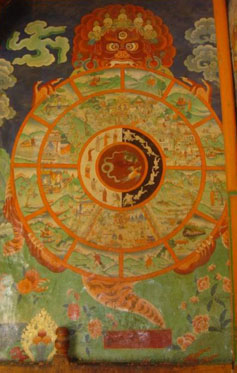
|
|
|
|
|
Fair
& Festival
in Tibet |
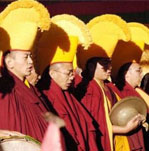 |
Tibet has various
festivals which commonly are performed to worship the Buddha
throughout the year. Festivals are time when people painted
their homes, dressed in new clothes, resolve quarrels, enjoy
good food and wines, visit their frends and relatives, visit
monasteries and offer prayers and indulge themselves in never
ending enjoyment and happiness. The popular Tibetan festivals
are, The Butter Lamp Festival, Losar Festival, Shoton
Festival, Saga Dawa Festival, Onkhor Festival and The Bathing
Festival.
More
Information on Festivals in Tibet
|
|
|
|
|
People
of Tibet |
|
Tibetan people are optimistic, happy, warm
and hospitable. Guests are always welcomed in Tibetan families.
However, Tibetans are the main inhabitants on the plateau, Menpa,
Luopa, Han Chinese, Hui, Sherpa, and a few Deng people also
shared the population. According to the census conducted in
2000, there are 2.62 million people in Tibet, with 92.2% of the
Tibetan population. Traditionally the people in small villages
earned their livelihood from farming, the barely is the main
crop here. The roaming nomads earned their living by herding
yaks and sheep. In urban areas, most Tibetans made a living as
craftsmen. However, nowadays more and more people are migrating
into businesses. The official language of Tibet is Chinese but
Tibetan is more widely spoken with its different dialects. Most
Tibetans are devoted Buddhists and follow Tibetan Buddhism.
Tibetan Buddhism is known as “Buddhism” with the local Tibetans
and as Lamaism elsewhere in the outside world. There are also a
few followers of old Bon, Islam and Catholicism in Tibet.
|
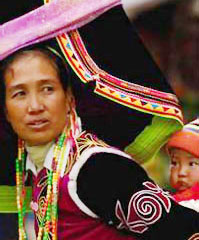
|
|
|
|
|
Language |
|
Though the official language of Tibet is
Chinese Tibetans use their own language, the Tibetan language,
known as bod-yig in Tibet inhabited areas. It is spoken in Tibet,
Bhutan, Nepal, and in parts of northern India such as Sikkim. It
belongs to the Tibeto-Burman branch of the Sino-Tibetan language
family. Spoken Tibetan includes numerous regional dialects which,
in many cases, are not mutually intelligible. According to
geographical divisions, there are three major local dialects:
Weizang, Kang and Amdo. The first two dialects have their own
tones in pronunciation while the latter do not. The commonly
called greater Tibetans language is spoken by approximately 6
million people across the Tibetan Plateau and another 150,000
exile speakers who have fled from modern-day Tibet to India and
other countries. The writing script of Tibetan language was formed
in early 7th century and is based on the ancient Sanskrit language
of India.
Tibetan language consists of thirty
consonant, four vowels, five inverted letters (for the renting of
foreign words) and the punctuations. Sentences are written from
right to the left. With two major written scripts namely the
regular script and the cursive hand, Tibetan language is widely
used in all areas inhabited by Tibetans.
|
|
|
|
|
Cuisine |
|
The Cuisine of Tibet mirrors the rich
heritage of the region and people's adaptation to high altitude
and religious culinary restrictions. The most important crop in
Tibet is barley and the staple food of Tibet is tsampa which is
dough made from barley. Tsampa is either rolled into noodles or
made into steamed dumplings known as momos. Meat dishes are
likely to be yak, goat, or mutton, often dried, or cooked into a
spicy stew with potatoes. Mustard seed is also cultivated in
Tibet, and therefore is an important ingredient of Tibetan
cuisine. Yak yoghurt, butter and cheese are commonly eaten, and
well-prepared yoghurt is considered something of a prestige item.
The most favorite beverage of Tibetan is butter tea.
|
|
|
|
|
Tibetan Medicine |
|
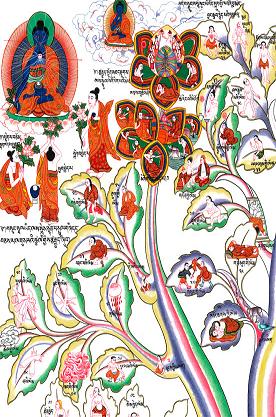 |
Tibetan medicine
system is one of the oldest medicine forms in the world. It
utilizes up to two thousand types of plants, forty animal species,
and fifty minerals. One of the key figures in development of
Tibetan medicine was the renowned eighth century physician Yutok
Yonten Gonpo. He created the Four Medical Tantras assimilating
material from the medical traditions of Persia, India and China.
The tantras contained a total of 156 chapters in the form of Thangkas, which contain information about the archaic Tibetan
medicine and the essences of medicines in other places. Yuthok
Sarma Yonten Gonpo, the descendant of Yutok Yonten Gonpo, further
strengthened the tradition by adding eighteen medical works. One
of his books includes paintings depicting the resetting of a
broken bone. In addition, he compiled a set of anatomical pictures
of internal organs.
More
Information on
Tibetan
Medicine |
|
|
|

